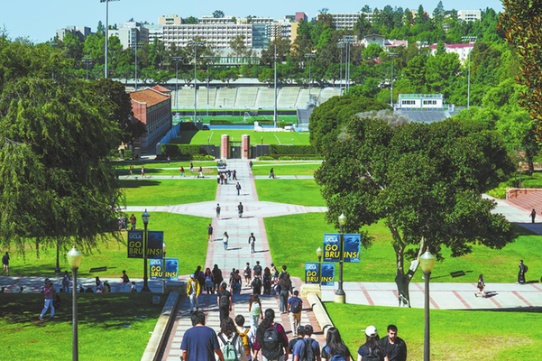Sustainable Development of Transport in China
China Daily | Updated: 2020-12-23 07:57
III. A Key to Poverty Alleviation and Moderate Prosperity
Achieving moderate prosperity in China's rural areas-the key for completion of this overall national task-hinges largely on the improvement of the transport network there. China is very conscious of the role of transport in poverty alleviation, and sees it as an important support to all-round moderate prosperity across the country, the modernization of agriculture and rural areas, and shared benefits from reform and development. Therefore, it makes every effort to remove the transport bottlenecks that hinder the development of rural areas, providing a solid foundation for rural people to escape from poverty and move to moderate prosperity.
1. Winning the Battle Against Poverty Through Transport
Poverty alleviation has been raised to the top of the agenda for transport in the new era. The transport authorities have improved the planning and policy system for poverty alleviation, created new work models, and prioritized the planning, funding, coordination and implementation of poverty alleviation-oriented transport projects and measures. Through these extraordinary steps and efforts, China is counting on transport to facilitate its campaign against poverty.
Better planning for transport projects to alleviate poverty. China has improved the top-level design and policy framework of poverty alleviation-oriented transport projects. It has devised strategies, implementation programs, and action plans in this regard, including the Outline of Poverty Alleviation-Oriented Transport Projects in Contiguous Poverty-Stricken Areas (2011-2020), the Plan for Transport-Driven Poverty Alleviation During the 13th Five-Year Plan Period (2016-2020), the Opinions on the Implementation of the Plan to Further Leverage Transport to Support Poverty Alleviation, involving 1,177 counties, cities and districts in old revolutionary base areas, areas with large ethnic minority populations, border areas, and poor areas.
Taking severely impoverished areas as the priority, China has moved faster to upgrade national expressways and national and provincial highways, and prioritized transport projects that provide villages and households with better access to roads. It has worked to renovate and expand trunk and rural roads, improve the quality, safety and environment of transport infrastructure, and leverage local resources through transport.
Breaking new ground in targeted transport-driven poverty elimination. China has intensified coordinated planning in this field by formulating and improving a system in which a five-year plan, a three-year action plan and annual plans operate as a unit. Detailed annual programs are made at the provincial level to ensure the plans are carried out in alignment.
China has increased its effort to help impoverished people access education and build aspirations. In addition to providing them with useful information, knowledge, skills training and technologies, it has also encouraged them to find work on rural road construction projects, and employed workers from poverty-stricken households to carry out road maintenance.
Increasing investment in poverty alleviation-oriented transport projects. The state has steadily increased the central government subsidy as a proportion of transport project investment for impoverished areas. From 2012 to 2020, over RMB1.46 trillion, or 61.3 percent of total road construction funds from vehicle purchase tax, was directed to poor areas, which mobilized another RMB5.13 trillion of social investment. The average contribution from vehicle purchase tax to national expressway projects rose from 15 percent during the 12th Five-year Plan period (2011-2015) to 30 percent during the 13th Five-year Plan period (2016-2020), and the increase in national highways was from 30 percent to 50 percent. Government subsidies from vehicle purchase tax to asphalt and concrete road projects for towns, townships and administrative villages rose to an average of 70 percent or more of project costs.
By optimizing the disposition of central budget investment, vehicle purchase tax, and other funds, China has lent more financial support to ensure the implementation of these policies and projects.
Focusing on severely impoverished areas. The most arduous tasks in achieving moderate prosperity throughout the country are in the rural areas, especially in severely impoverished areas. Therefore, China has underlined the primary role of transport in poverty elimination, and increased support to these locations, giving preference to the "three areas and three prefectures" when allocating new funds, planning new projects and formulating new measures. From 2016 to 2020, China spent RMB274.6 billion from vehicle purchase tax on transport projects in the "three areas and three prefectures", including RMB78.1 billion on rural road projects.
2. Promoting High-Quality Transport in Poor Areas
Good roads are key to prosperity in all sectors. Aiming to build high-quality rural roads that are properly built, operated, managed, and maintained, China has created a safe and easily accessible transport network that links villages, towns and townships in impoverished areas and connects them with other parts of the country. It has improved passenger and freight transport services in urban and rural areas, and expanded bus services to more villages. The backward nature of transport in poor areas has gone through a complete transformation.
Establishing a comprehensive transport network in poor areas. Inadequate transport infrastructure is one of the most formidable challenges confronting poverty-stricken areas. To resolve this challenge, the state subsidized the upgrading of 17,000 km of national expressways and 53,000 km of national highways, and the building of 2,365 km of inland waterways from 2016 to 2019. By now, almost all county seats in poor areas have access to highways of Grade II or above, with many of the counties having expressways, and some having railways or even airports. A high-grade inland waterway network linking trunk rivers and tributaries continues to improve. Through such efforts, a comprehensive transport network is taking shape in poor areas rapidly, and the gap between in and outside of these areas is shrinking.
Achieving notable results in building high-quality rural roads. Two hundred pilot counties have led the development of high-quality rural roads that are properly built, operated, managed, and maintained. China has strengthened regulation and exercised strict quality control of rural road projects, making seven key pieces of information available to the public: construction plans, subsidy policies, tendering, construction management, quality supervision, fund management, and project delivery and review. The country has improved the configuration of the rural road network, promoted the road chief system nationwide, and enhanced the long-term mechanism for building high-quality rural roads. A five-tiered accountability system has been implemented, clearly defining responsibilities for road management at provincial, city, county, township, and village levels. In the process of reforming public institutions and township government institutions, the rural road management system in counties and towns has also been improved.
The transport departments have strived to increase public satisfaction with rural roads, and promoted the practice of packaging road maintenance contracts with construction projects. The beautiful countryside program has served to improve the environment along rural roads.
Passenger transport resources in urban and rural areas are being coordinated, and new modes of passenger transport are being explored in rural areas. The resources of transport departments, postal agencies, supply and marketing cooperatives, and e-commerce companies have been integrated to improve logistics in poor rural areas.
These measures have achieved solid results, bringing business and funds to rural areas, especially those suffering from poverty.
Panel 8 High-Quality Rural Roads
The program to build high-quality rural roads that are properly built, operated, managed, and maintained is an important symbol of social transformation in China's rural areas in the new era. By the end of 2019, rural roads accounted for 83.8 percent of the total length of roads in China, and classified highways made up 93.2 percent of rural roads. In 2019, 98.8 percent of rural roads were subject to government maintenance plans, and 83 percent were ranked as in medium, good or excellent condition. Bus services were accessible to 99.8 percent of administrative villages. The government has subsidized the upgrading of 59,000 km of roads to serve resource transport, tourism and business development in poor areas, resolving long-standing travel obstacles there.
The interconnected network of high-quality rural roads has shortened the time for traveling between urban and rural areas, greatly improved working and living conditions in rural areas, transformed rural society and provided remote villages with access to modernity. The movement of people and goods has brought knowledge, information and funds into poor areas, helping people there open their minds, abandon outdated social mores, and promote healthy practices through cultural exchanges. Thus, poor people can have access to a better education and become more confident in their ability to lift themselves out of poverty. This has laid a solid foundation for farmers to achieve prosperity through education.
Making travel easier and more convenient. Due to the significant improvement in rural roads, the days in which travelers had to trudge through dust and mud on dirt roads are gone. All towns, townships and administrative villages with feasible conditions had been connected to asphalt and concrete roads by the end of 2019, and to bus services by September 2020.
Integrated road passenger transport in urban and rural areas has made progress. A passenger transport network with county seats as centers, towns and townships as junctions, and administrative villages as points has taken shape. China's 600 million rural people now enjoy easy and convenient access to better roads and bus services between villages and between urban and rural areas.
























